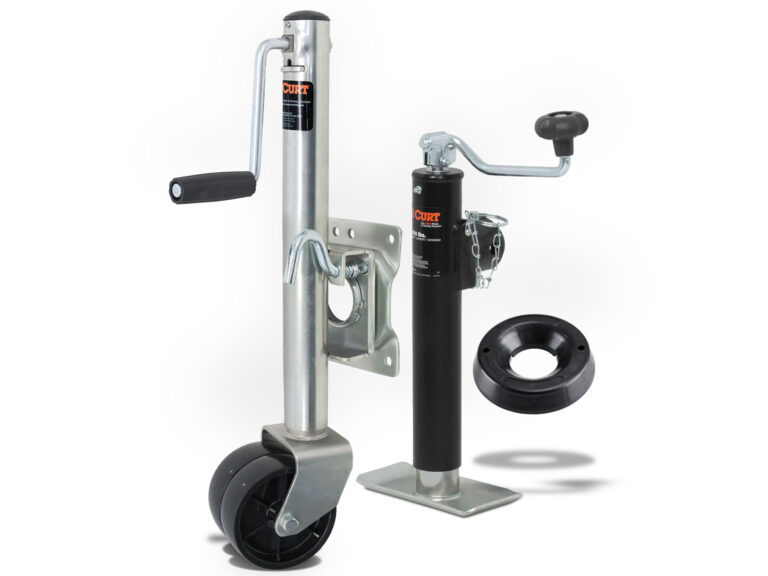The sign on the door says “Finance.” To me, it might as well be the gates of Hell. I’ve walked out of the showroom with a good deal on a boat and into the dreaded back office — a place full of money-grabbing ghouls ready to play trick or treat with my dreams. That’s when I hear him. “Pssst, over here, kid,” from an odd character lurking behind a nearby cruiser, voice weakened by time. “Trust me, you don’t want to go in there until you’ve seen this.” I’m worried he wants to show me a lot more than financial figures, so I tense when he reaches into the depths of his overcoat. Lucky for me, the only thing he pulls out is a well-worn calculator. With relief I look up, and then step back in shock. “Hey, aren’t you Alan Greenspa…” But he cuts me off. “Nah, we just look alike. Call me, uh, Murray,” he says while ushering me out of the showroom. “Listen, I want you to forget what you think you know about boat loans. You’re about to get a crash course in modern finance.” Suddenly my mother’s voice is warning me not to talk to strangers. “Sorry, Mom,” I mumble to myself, but this weirdo — who is already well into his lecture — might get me a boat.
TOUGH TIMES
We’re not even to the fuel dock before I’ve had the first lesson’s harsh reality drilled into my brain — don’t expect the creative finance deals of the recent past. “If you’re thinking zero down, or you have lousy credit, you’re about three years too late,” says Murray. “The banks went a little crazy. They forgot all about the processes that had been in place for decades, looking the other way instead of checking a guy’s income, not considering whether he owned a home and not counting what kind of equity, if any, he had in it, and not even looking at whether the guy was employed. And don’t get me started on what they considered a down payment. Things got out of hand, so now the pendulum’s swinging the other way, and guys like you have to deal with the fallout.”
I now expect that how much money I can borrow will be based almost solely on a harsh appraisal of my credit score. If it’s good, I’m in business. If it’s bad, I’ll be lucky to have a kayak in my future. “Take note of how fast the info comes back to the finance guy,” says my guru. “If it’s right away, they’ll be all over you. If it takes a while, you have problems.”
Before I humiliate myself in front of the dealership’s money guy, Murray suggests I contact the three major credit reporting agencies: Equifax (800/685-1111, www.equifax.com), Experian (888/397-3742, www.experian.com), and TransUnion (800/888-4213, www.transunion.com). Their reports are free, so contact all three — they often have different scores. Each knows all about my accounts, bill-paying history, the unused portions of my lines of credit, whether I’ve had collection actions, and my outstanding debt. That info all adds up to a three-digit number — my credit score — between 300 and 850, which will decide my fate. If it’s above 720, I’m golden, typically considered a safe risk and worthy of a low interest rate. Below 700? Better luck next time.
“Want to slowly trash your credit rating?” asks Murray, wagging a bony finger at me. “Each time you apply for a loan or credit — make what we call a hard inquiry — your rating drops by three to seven points. When that guy in the finance office says, ‘Let’s send in your application to see what comes back,’ your credit rating goes south.”
The same thing happens whether you go for an 18-months-same-as-cash deal at the furniture store, apply for a gas card, or get a new credit card. Each inquiry or application lowers your score. If your rating is on the cusp, a few points might kill the deal. Multiple boat loan inquiries, however, shouldn’t take a toll. As Murray reassures me, credit applications for the same purpose within a short time span usually count as a single inquiry.
If you don’t make the cut, give yourself time to improve your financial picture. Credit cards are the obvious. Make the required monthly minimum payment, and try to add something to eat away at the principal. Better yet, ask your bank’s loan officer for an appraisal and what you need to do to improve your rating. He’s a good source of honest information. Assuming your credit isn’t completely in the toilet, you can make things look significantly better in as little as six months.
Six months is too long to wait? Murray disagrees. “I bet that boat or one like it will still be sitting in the showroom.”
HIGHER MATH
A little research on the Internet has shown me that, on average, boaters have a good chance of making the cut. Boaters tend to be in a slightly better financial position than people who don’t boat. Boaters are also likely to own a few other toys, a fact that, given a good payment record, should increase credit scores. I share this fact with Murray, who quickly brings me back to reality.
“So you know how to Google? Big deal, hotshot,” he says, slipping the calculator back inside his overcoat. “Even if your credit is great, you still need cash. Today these guys want what we in the biz call earnest money. That’s a down payment, for those of you who’ve forgotten the concept. And sorry, a token amount won’t cut it. We’re talking at least 15 percent.”
As I mentally scan my bank accounts, he moves without hesitation to the next subject — interest rates. As I soon learn, larger loans of $25,000 and up currently have fixed rates in the neighborhood of 7 percent. For loans less than $25,000, expect between 8.5 and 9 percent. And that’s to those with good credit. Terms? As long as 10 years for the smaller loans, and between 15 and 20 years for the larger. The actual rate will be decided not only by your credit score but also a multitude of arcane items each bank considers in its own unique formula.
“See what the dealer can do, but don’t be afraid to shop your loan around a few reputable places — such as Bank of America or Excel Credit — that are familiar with marine financing,” says Murray. Odds are, they may come back slightly different. “But if it’s just going to be a few tenths of a percentage point, don’t screw around — go with the guy who’s selling you the boat. He’s the one you’ll be coming back to for service. When your stern drive eats its gears and you want it back by the weekend, who do you think will get better treatment? The guy who gave the dealer his financing or the one who went somewhere else to save a few pennies?”
Should I take a chance and wait, hoping that interest rates might drop? “No,” says Murray. “Just do it. Sure, there’s a chance that interest rates might go down, but even if they do drop, half a point isn’t going to make much of a dent in your monthly payment.” He again produces his trusty calculator. “At 7 percent, the payment on 50 grand over 15 years is $449. At 6.5 percent, it’s $435. Even if rates fall as low as 6 percent, it’d still only save you about $28 a month. That’s dinner for one, and not a very good dinner at that.”
GOOD NEWS
Whether your interest rate is great or just average, in the end it all comes down to just how much you’re comfortable paying every month, a figure you must add to your already lengthy list of financial obligations. The ultra-conservative side of me says to do a low payment for a longer period. If I finance $25,000 for 10 years at an interest rate of 7 percent, my payment is an affordable $290. The catch? If I let the loan run its course, I’ll have paid out a whopping $9,832 in interest.
I’m pretty confident, however, that I can make the payment on the shorter-term loan, say 66 months. If I can cut it, I’ll save nearly $4,000. Murray senses my dilemma. “Think about it. The money you wasted by going long term and paying only the minimum could have let you upgrade to bigger engines or even a bigger boat.”
But what if I commit to the shorter term and encounter financial difficulties down the road? “If you’re worried, play it safe and smart,” says Murray, again whipping out his calculator. “Take the longer deal, but add to your monthly payment. Say you pay another $100 a month. That 10-year loan will be paid off in less than 7, and you’ll save about $3,400. Or make that bigger payment from the 66-month term. You’ll pay if off the same as if you took the shorter-term loan. But you’ll have a safety net. If trouble pops up, you’re only committed to the smaller payment.”
My financial education evidently complete, he buttons up his greasy overcoat and tosses me his trusty calculator. “It’s yours now,” he says, opening the showroom door and gesturing me back toward the office I once feared. “There are no more secrets. Matter of fact, there never were.”
As he starts to leave, I can’t help but ask. “Hey, Murray, what’s up with that flasher getup? C’mon, a financial genius like you has to be able to afford some nice clothes.”
“Kid,” he responds, gazing out at the multitude of boats bobbing at the dock, “I was one of the guys who approved all of your buddies’ loans not so many years ago. And frankly, this is all I have left.”
As he walks out the door, sunlight gleams off his naked legs, and I’m suddenly intensely aware of the calculator resting in my hand. “Uh, Murray, please tell me you had pockets in there…”









